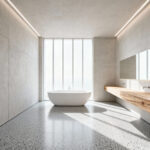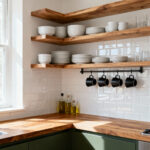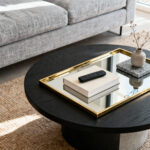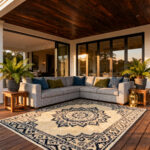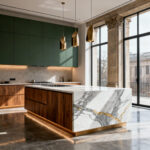Picture this: you’re standing in the middle of your kitchen, coffee in hand, admiring the gleaming new floors you just had installed. As you gaze down, you can’t help but feel a sense of pride and satisfaction. After all, the flooring you chose isn’t just beautiful – it’s built to withstand the demands of your busy kitchen for years to come.
If you’re like most homeowners, you know that the kitchen is the heart of the home. It’s where meals are prepared, memories are made, and family gathers. That’s why choosing the right flooring is so important. You want something that looks great and can handle the daily wear and tear of a hardworking kitchen.
In this article, we’ll explore eight durable and stylish kitchen flooring options that can withstand the test of time. From classic tile to modern luxury vinyl plank, we’ll explore the key features, benefits, and design possibilities of each material. By the end, you’ll better understand which flooring option might be the perfect fit for your kitchen.
Tile Flooring
Let’s start with a timeless classic: tile flooring. Tile is popular for kitchens because of its exceptional durability and easy maintenance. Spills and messes are no match for tile’s scratch-resistant surface – just a quick wipe, and your floors will look as good as new.
But tile isn’t just practical; it offers an incredible range of styles and colors. Whether you’re drawn to classic subway tiles or modern geometric designs, there’s a tile option to suit every kitchen aesthetic. With proper care and maintenance, your tile floors can last for decades, making them a smart investment for your home.

One thing to consider when selecting a tile is slip resistance. For high-traffic areas in your kitchen, look for textured or matte finish tiles to help prevent accidents. You can also get creative with patterned or mosaic tiles to add a touch of personality to your space.
Hardwood Flooring
Hardwood flooring is another timeless choice for kitchens. It offers a warm and inviting atmosphere that complements a variety of design styles. Hardwood’s durability is unmatched, and it can withstand daily foot traffic and the occasional dropped pan or dish.
But hardwood’s appeal goes beyond its strength. One of the best things about this flooring material is that it can be refinished multiple times, allowing you to restore its original beauty time and time again. With a wide range of wood species and finishes available, you can find the perfect hardwood to match your kitchen’s aesthetic.

Of course, a few considerations exist when using hardwood in a kitchen. Moisture resistance is key, as kitchens are prone to spills and splashes. Certain hardwood species, like oak, are more resistant to water damage than others. Engineered hardwood is another option that can provide better moisture protection.
Proper maintenance is also crucial for keeping your hardwood floors looking their best. Regular sweeping, quick spill cleanup and the occasional professional cleaning can go a long way in preserving the longevity of your hardwood investment.
Luxury Vinyl Plank (LVP) Flooring
If you’re looking for a durable and water-resistant option that can mimic the look of more expensive materials, luxury vinyl plank (LVP) flooring might be the perfect choice for your kitchen. LVP offers a winning combination of style and functionality with a wide range of wood-look and tile-look designs.
One of the standout features of LVP is its impressive resistance to scratches, stains, and water damage. This makes it ideal for high-traffic areas and kitchens, where spills and accidents are common. LVP is relatively easy to install and maintain, saving you time and hassle.
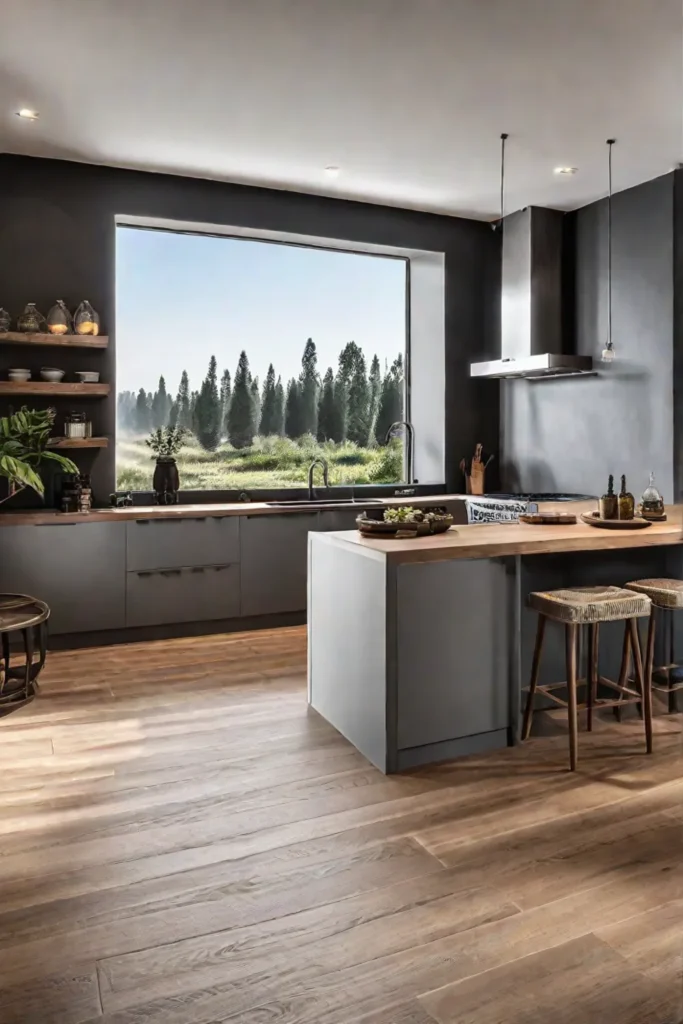
When selecting LVP for your kitchen, consider options with a textured or embossed surface. This can provide added slip resistance, especially in areas near sinks and appliances. LVP’s versatility allows you to use it throughout your kitchen, creating a cohesive and visually appealing look.
Laminate Flooring
Laminate flooring is another cost-effective and practical option for kitchen floors. With its affordability and easy installation, laminate is a popular choice for homeowners who want the look of hardwood or tile without the hefty price tag.
One of the key benefits of laminate is its resistance to scratches, stains, and moisture. These durable qualities make laminate a great fit for busy kitchens, where spills and heavy foot traffic are the norm. And with a wide variety of wood-look and tile-look designs available, you can find a laminate that perfectly complements your kitchen’s style.
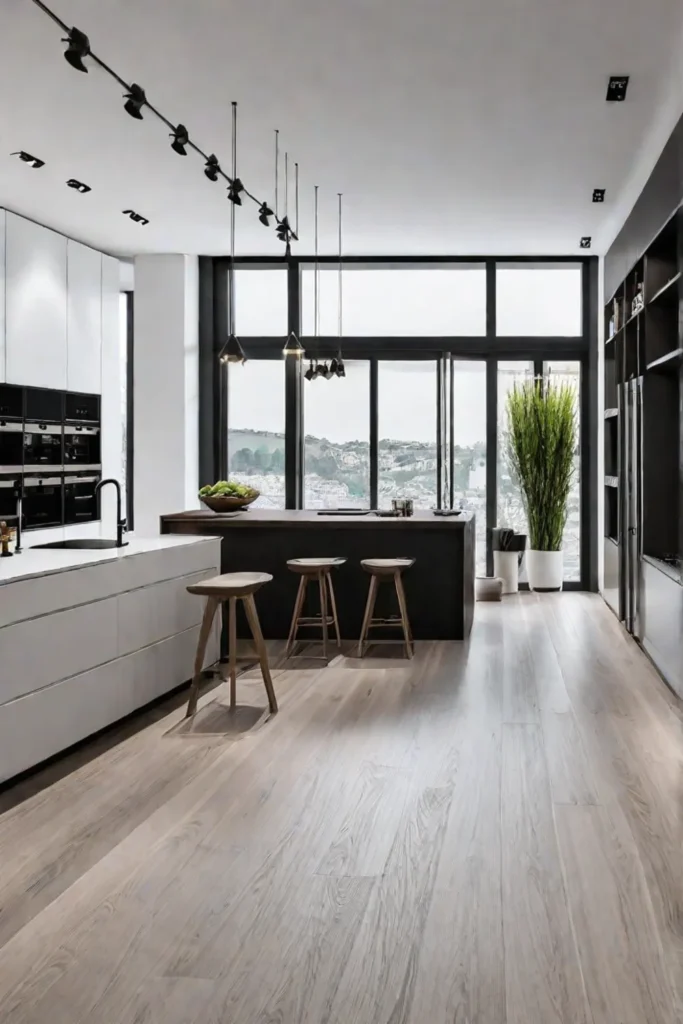
When using laminate in the kitchen, look for products with a water-resistant or waterproof core. This added layer of protection can help prevent damage from accidental spills or splashes. Laminate flooring can also be a great choice if you have a radiant floor heating system, as it’s compatible with this type of heating technology.
Concrete Flooring
Consider concrete flooring for a truly unique and industrial-chic look in your kitchen. This durable material has gained popularity in modern and contemporary kitchen designs, offering a sleek and customizable aesthetic.
One of the standout features of concrete flooring is its exceptional longevity. Properly sealed and finished, concrete can withstand the daily demands of a busy kitchen without showing signs of wear and tear. The customization options are endless—you can stain, dye, or apply decorative finishes to create a one-of-a-kind look that reflects your personal style.
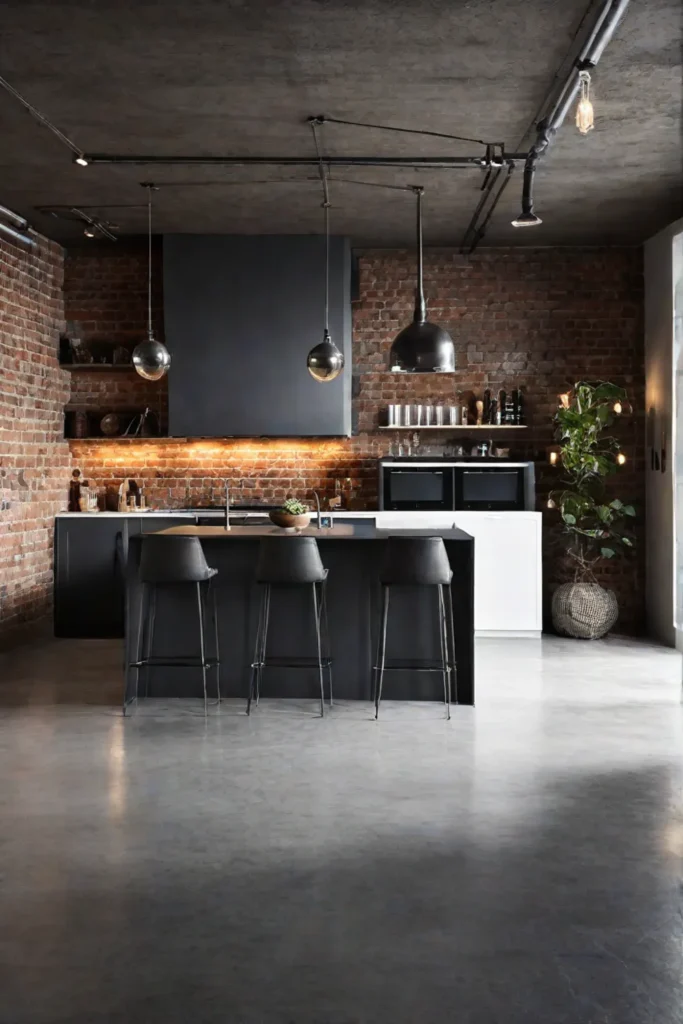
Another benefit of concrete flooring is its low maintenance requirements. Regular sweeping and occasional mopping is usually all it takes to keep your concrete floors looking their best. And if you want to add a touch of warmth underfoot, you can even incorporate radiant floor heating beneath the concrete for a cozy and comfortable kitchen.
Cork Flooring
If you’re looking for a unique and eco-friendly flooring option for your kitchen, cork might be the way to go. Cork flooring offers a distinctive aesthetic and many practical benefits, including comfort, moisture resistance, and sound insulation.
One of the standout features of cork is its cushioning properties. This natural material is incredibly shock-absorbent, making it a comfortable choice for areas where you’ll spend a lot of time on your feet, like the kitchen. Cork’s insulating qualities also help to reduce noise levels, creating a more peaceful and serene cooking environment.

In addition to its comfort and acoustic advantages, cork is highly resistant to moisture, mold, and mildew, making it ideal for kitchens where spills and splashes are common. As a renewable resource, cork flooring is an environmentally friendly option that can give your kitchen a modern, sustainable look.
When considering cork flooring for your kitchen, consider combining it with radiant floor heating. Cork’s heat conductivity can help distribute warmth evenly across the surface, creating a cozy and comfortable space.
Linoleum Flooring
Linoleum flooring is another durable and eco-friendly option worth considering for your kitchen. This natural material, made primarily from linseed oil, wood flour, and other renewable ingredients, has been popular for decades thanks to its longevity and versatility.
One of the linoleum’s standout features is its wear-and-tear resistance. With proper care and maintenance, linoleum floors can last for decades, making them a smart investment for your kitchen. The design possibilities are endless, with a wide range of colors, patterns, and textures.
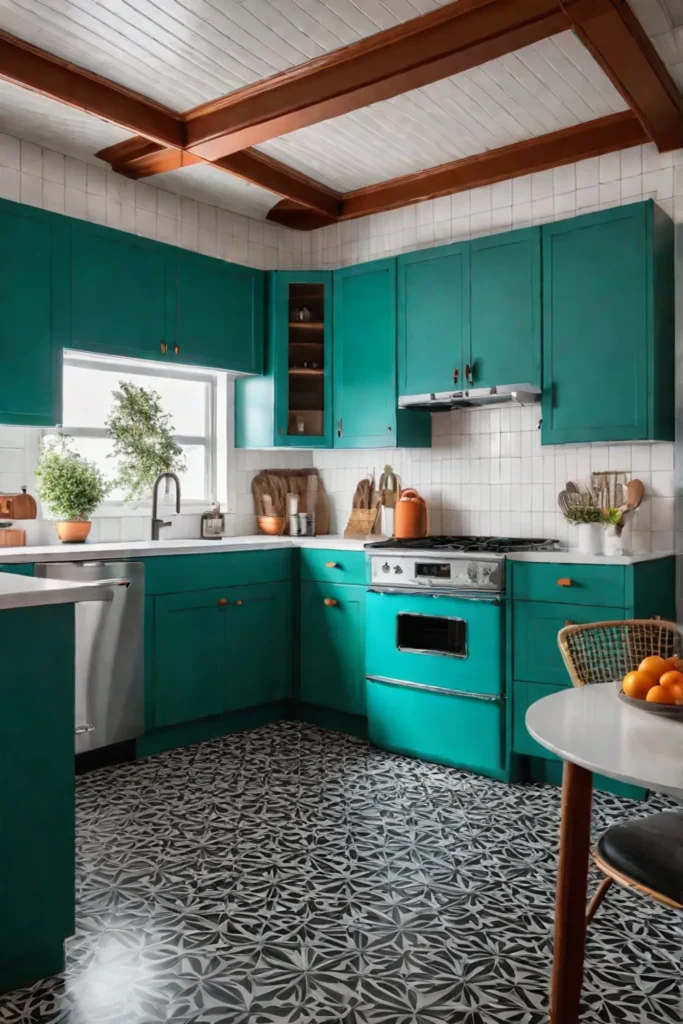
Linoleum’s low-maintenance requirements are another plus for busy kitchens. Regular sweeping and occasional damp mopping with a mild detergent is usually all it takes to keep your floors looking their best. Just be mindful that linoleum’s hard surface may not be as effective at dampening noise as some other flooring materials.
When incorporating linoleum into your kitchen design, consider using it in a patterned or inlaid layout to add a touch of visual interest. Linoleum is also a great choice for high-traffic areas near sinks and appliances, where its durability can shine.
Bamboo Flooring
Last but not least, let’s talk about bamboo flooring—a sustainable and stylish option perfect for kitchen environments. As a rapidly renewable grass, bamboo offers a unique aesthetic that can complement various kitchen designs, from modern to traditional.
But bamboo isn’t just a pretty face; it’s incredibly durable and scratch-resistant, making it a practical choice for busy kitchens. Bamboo’s natural resistance to moisture and stains makes it a great fit for areas where spills and splashes are common.
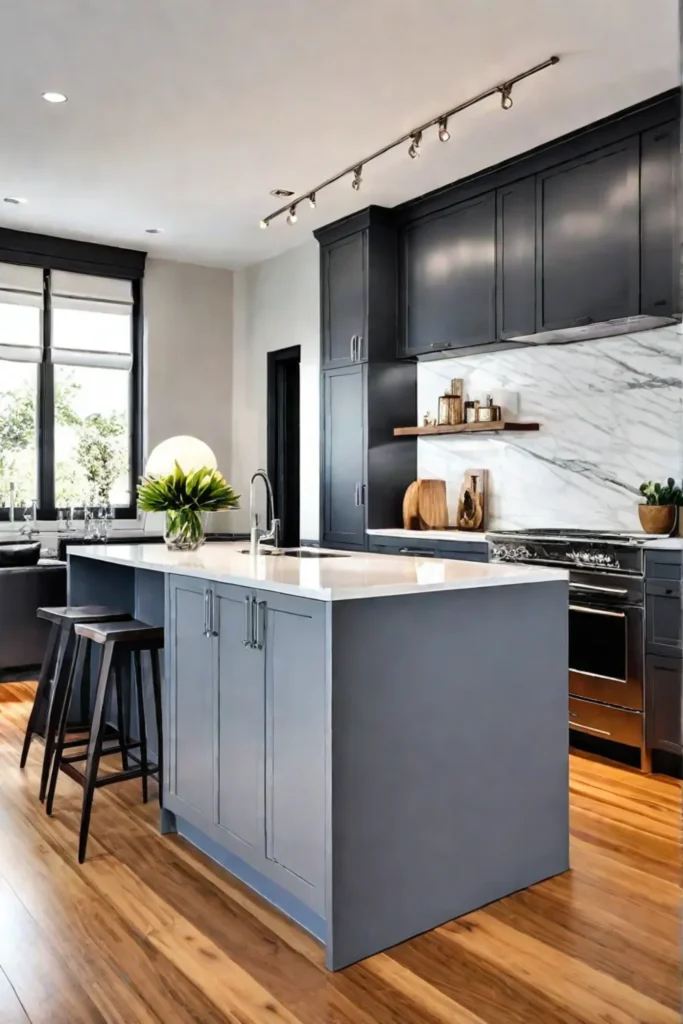
When selecting bamboo flooring for your kitchen, look for products specifically engineered for high-moisture environments. These specialized bamboo floors often feature additional coatings or treatments to enhance their water resistance and longevity.
Bamboo’s versatility also extends to its design possibilities. From natural finishes to carbonized tones, you can find a bamboo floor that perfectly complements your kitchen’s aesthetic. If you have a radiant floor heating system, bamboo can be an excellent choice, as it conducts heat efficiently to keep your kitchen cozy and comfortable.
Conclusion
When it comes to choosing the right kitchen flooring, the options are truly endless. From classic tile and hardwood to modern luxury vinyl plank and eco-friendly cork, each material offers unique benefits and design possibilities.
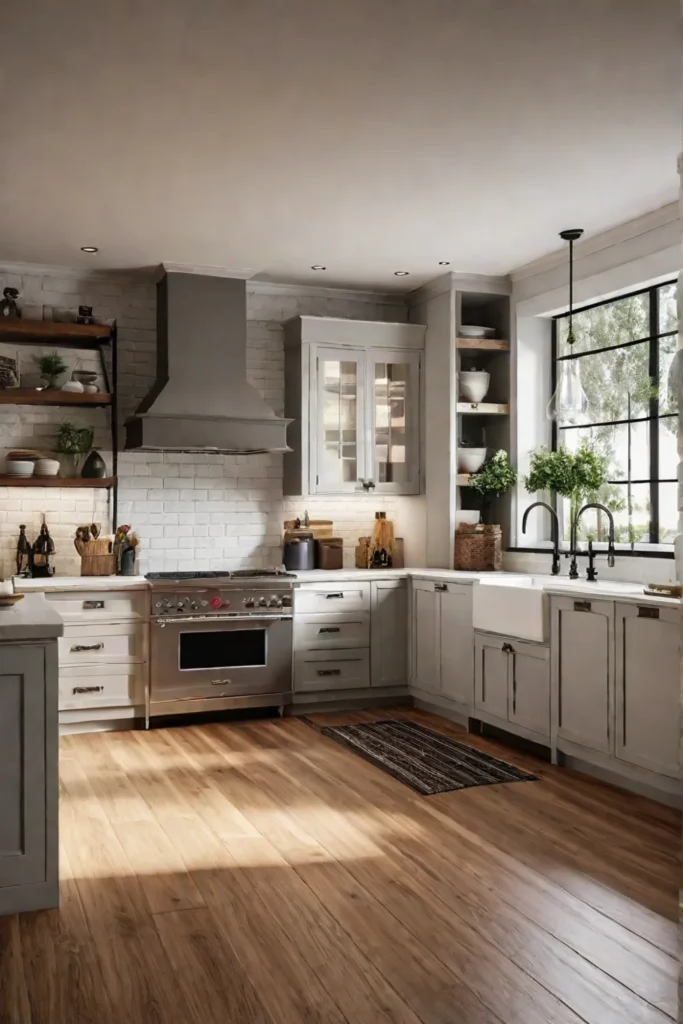
By understanding the key features, maintenance requirements, and potential applications of these different flooring options, you can make an informed decision that will enhance the look of your kitchen and provide long-lasting performance and functionality.
So, whether you’re renovating your kitchen from the ground up or simply looking to update your floors, take the time to explore these eight durable and stylish options. With the right flooring choice, you can create a kitchen that looks amazing and can withstand daily life’s demands for years to come.



